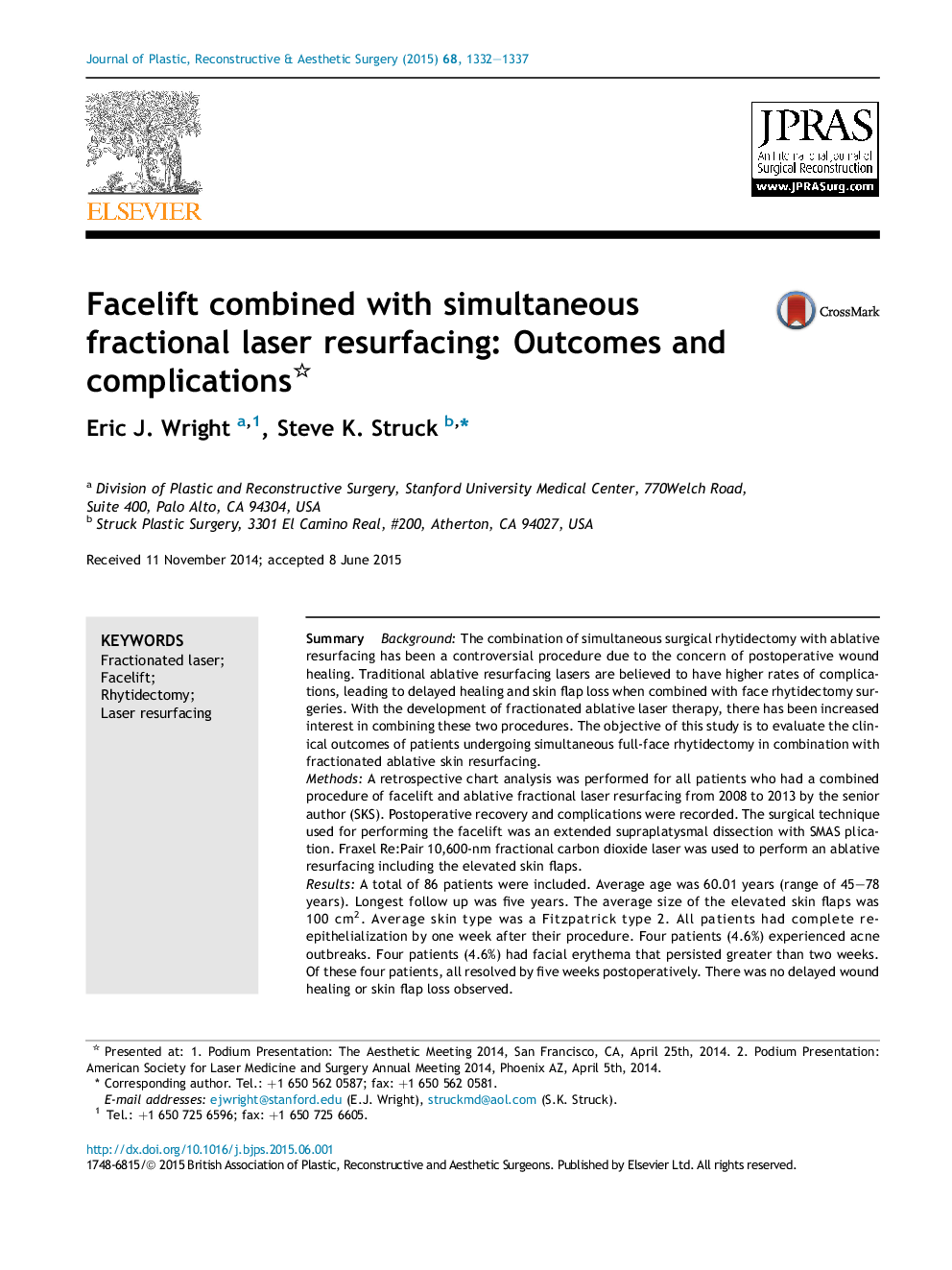| Article ID | Journal | Published Year | Pages | File Type |
|---|---|---|---|---|
| 4117677 | Journal of Plastic, Reconstructive & Aesthetic Surgery | 2015 | 6 Pages |
SummaryBackgroundThe combination of simultaneous surgical rhytidectomy with ablative resurfacing has been a controversial procedure due to the concern of postoperative wound healing. Traditional ablative resurfacing lasers are believed to have higher rates of complications, leading to delayed healing and skin flap loss when combined with face rhytidectomy surgeries. With the development of fractionated ablative laser therapy, there has been increased interest in combining these two procedures. The objective of this study is to evaluate the clinical outcomes of patients undergoing simultaneous full-face rhytidectomy in combination with fractionated ablative skin resurfacing.MethodsA retrospective chart analysis was performed for all patients who had a combined procedure of facelift and ablative fractional laser resurfacing from 2008 to 2013 by the senior author (SKS). Postoperative recovery and complications were recorded. The surgical technique used for performing the facelift was an extended supraplatysmal dissection with SMAS plication. Fraxel Re:Pair 10,600-nm fractional carbon dioxide laser was used to perform an ablative resurfacing including the elevated skin flaps.ResultsA total of 86 patients were included. Average age was 60.01 years (range of 45–78 years). Longest follow up was five years. The average size of the elevated skin flaps was 100 cm2. Average skin type was a Fitzpatrick type 2. All patients had complete re-epithelialization by one week after their procedure. Four patients (4.6%) experienced acne outbreaks. Four patients (4.6%) had facial erythema that persisted greater than two weeks. Of these four patients, all resolved by five weeks postoperatively. There was no delayed wound healing or skin flap loss observed.ConclusionOur results indicate that simultaneous rhytidectomy with fractionated ablative laser resurfacing does not cause an increase in wound healing or skin loss. Due to improved patient outcomes with combining these procedures, we believe that this can be increasingly offered as a safe combination.
